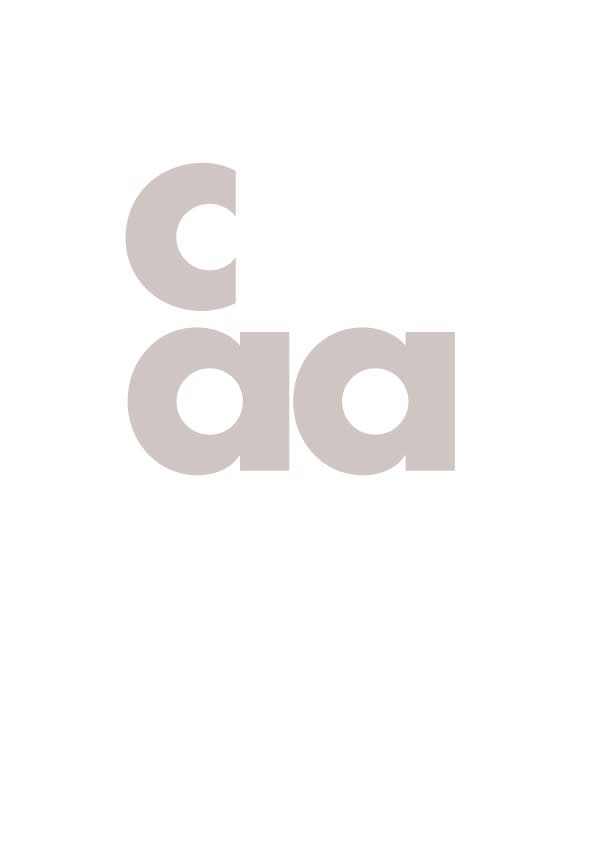Contemporary Applied Arts is delighted to present a new exhibition, Contemporary Nostalgia. Dive into the eclectic world of seven artists working in glass, paper, textiles and ceramic. Seeking inspiration both from the natural world and their own inner one, each maker’s work is an exuberant expression of the playfulness and experimentation in the British crafts scene.
The interdisciplinary group show is the newest iteration of our exhibition series 'British-Based: Global Origins', which centres the cultural diversity of CAA.
The exhibition runs from Tuesday 3rd – Saturday 21st September, and features works by Hannah White (textiles), Tessa Eastman (ceramics), Julie Arkell (paper), Gilles Le Corre (ceramics), Claire Ireland (ceramics) and Amelia & Charlie Burke (glass) highlighting the ways in which making with materials can be a conduit for exploring personal connections to place, history and memory.
Throughout Hannah White's creative practice, thread has always been a constant; drawing together her personal family history and her love of sculptural form. A childhood fascination with thread runs into her present day practice, reinterpreting traditional constructed textile techniques such as weaving, hand stitching and smocking into innovative three dimensional textile artworks. Her love of textiles has been passed down through generations of women in her family. Her grandmother Joyce was a very talented seamstress, having learnt many of her skills from her stepmother Cecilia, who was the wardrobe mistress to the film actress Greer Garson. 'Connecting threads' is a constant that runs throughout Hannah's creative process, both conceptually and literally. Threads tie her to her family history, as she continues her Grandma's and Step Great Grandmother’s textile legacy. Threads are also the foundation of Hannah's work, allowing her to innovate as she seeks to find new ways to construct textile sculptural forms.
The threads of history are also felt in the whimsical creations of Julie Arkell, one of the United Kingdom's best recognised contemporary folk artists. Each of her figures is unique, crafted from papier-mâché using pages from vintage novels and clothed in tiny uniforms painstakingly knitted from reclaimed yarns. A sense of wistfulness runs through all of her creations: each creature is clothed in scraps of poetry that have been circling in Julie's head and speak to the imagined narratives behind each character. Her pieces have a similar charm to folk art quilts, embracing the quirky and mismatched, layering patches and scraps of history into charming objects of whimsy that have captured collectors' hearts all over the world.
Claire Ireland's work is also characterised by a juxtapositon of elements, creating ceramic assemblages that have an otherworldly quality to them. Inspired by her studio’s location in the grounds of a historical steam museum in London, her sculptural ceramic works set geometric forms and textured surfaces against each other, revelling in the relationship between opposing elements to create a balanced whole. The fragility of a porcelain plant fragment, the strength of fractured solid clay, or the ethereal qualities of a smoky surface enveloping a form are all sources of inspiration.
Looking closely at surface runs through both Charlie and Amelia Burke's intricate glass pieces. Working together at their family-run glassblowing firm, the couple have each developed their own distinct visual identity. Charlie's hypnotic, flowing patterns draw the eye deep into the surface of the glass. Inspired by brain patterns, the movement of each piece mirrors the electric pathways of thought and the transference of information between neurons. Amelia's practice is based on the close study of details of the natural world, such as butterfly wings and fern fronds, redrawing them, scaling them up greatly, and reinterpreting them in the hot glass to create evocative glassware.
Tessa Eastman is also intrigued by the perpetual strangeness of the natural, exploding colours and textures into exuberant sculptures that reference ambiguous forms from the micro- to the macroscopic. Innovation is always at the heart of her practice, with intensive research into glaze science coupled with a playful eye on shape and form resulting in three-dimensional sculptures that are constantly revealing themselves, asking you to look again. Eastman’s playful aesthetic lends itself to the abstract cloud-like formations or curious and ambiguous sea-like creatures that appear to inhabit her work. Whether one relates pieces to the astral or underwater world, her sculptures are metaphors for the multifaceted personalities of people, which are sometimes biting and sometimes sweet.
Gilles Le Corre's latest series is characterised by an even more intensive focus on surface and texture, embracing a new development in his working process. By sgraffito drawing into a layer of porcelain slip, which is then filled in with a darker pigment, he creates a soft, carved line that recalls etching and the graphic lines of modernist artists like Paul Klee. The use of heavily textured clay, full of iron beads and sand from an open coal mine where the clay has been untouched for generations, gives the work an ancient quality, reminiscent of prehistoric carvings and the repetitive hatched patterns found in nature. The forms of the vessels are purposely simplified to allow the surface texture to express itself. Throwing marks are intentionally left in the finished pieces, the making process creating a ribbed effect that enhances the fluidity of the forms.
In conjunction with the exhibition, ceramicist Claire Ireland will be leading a workshop focusing on experimental markmaking on clay. Learn more and book tickets here.
'Contemporary Nostalgia' is on view at CAA from Tuesday 3 – Saturday 21 September 2024.









